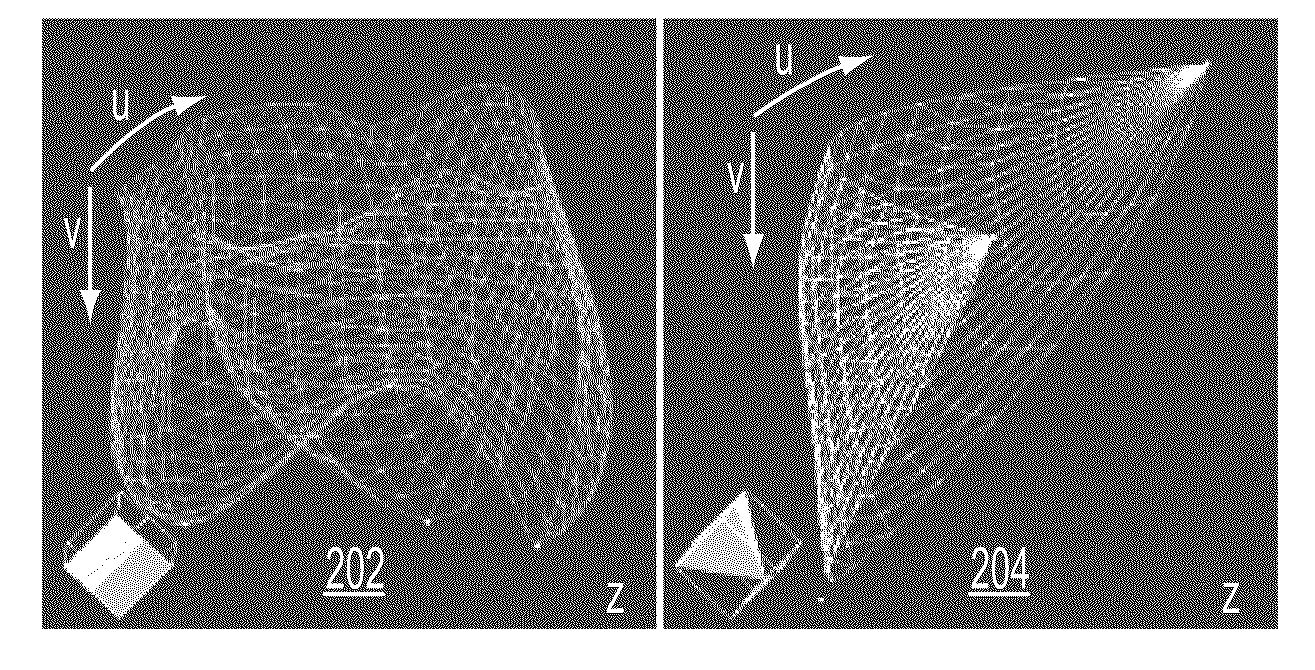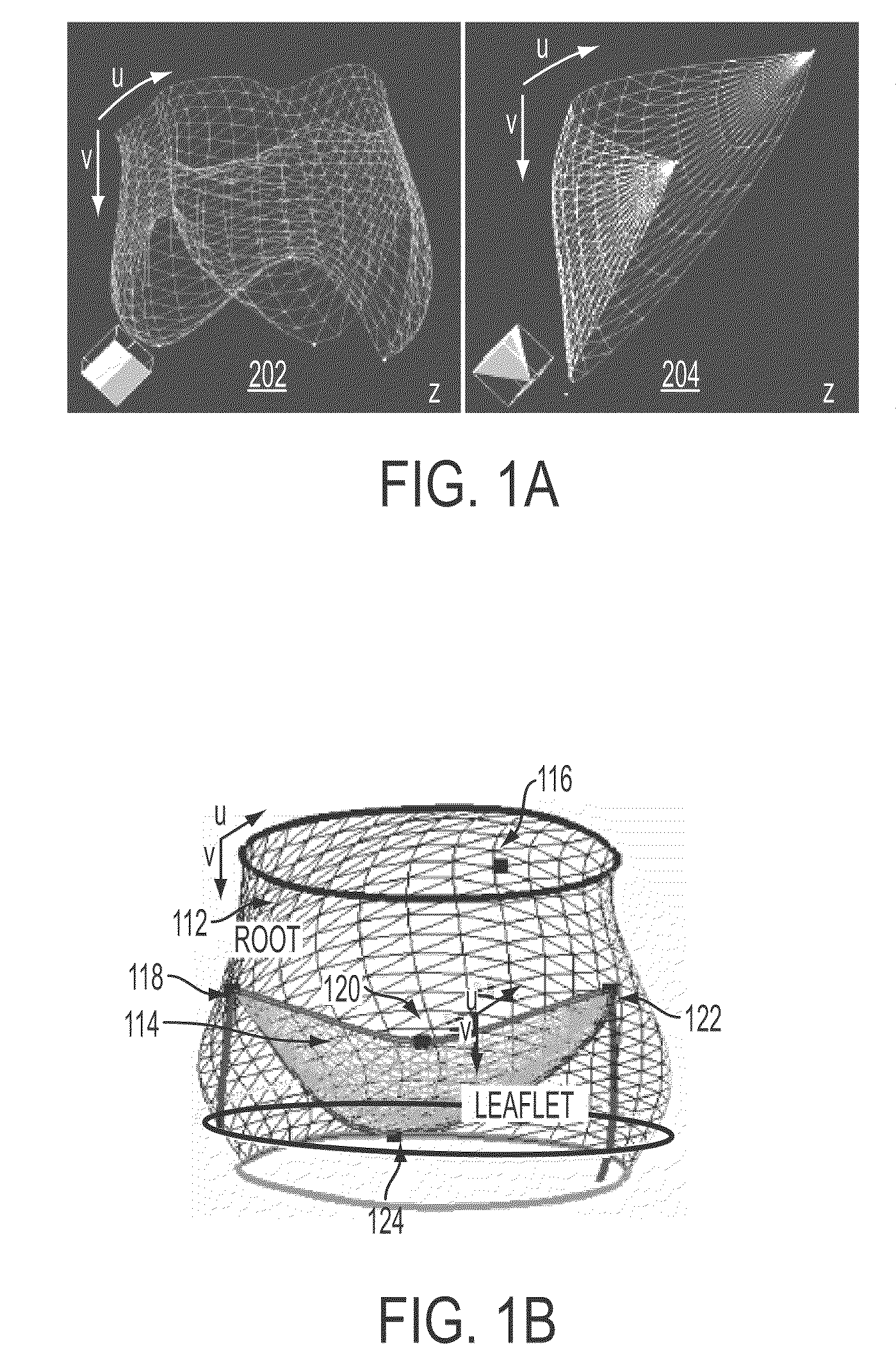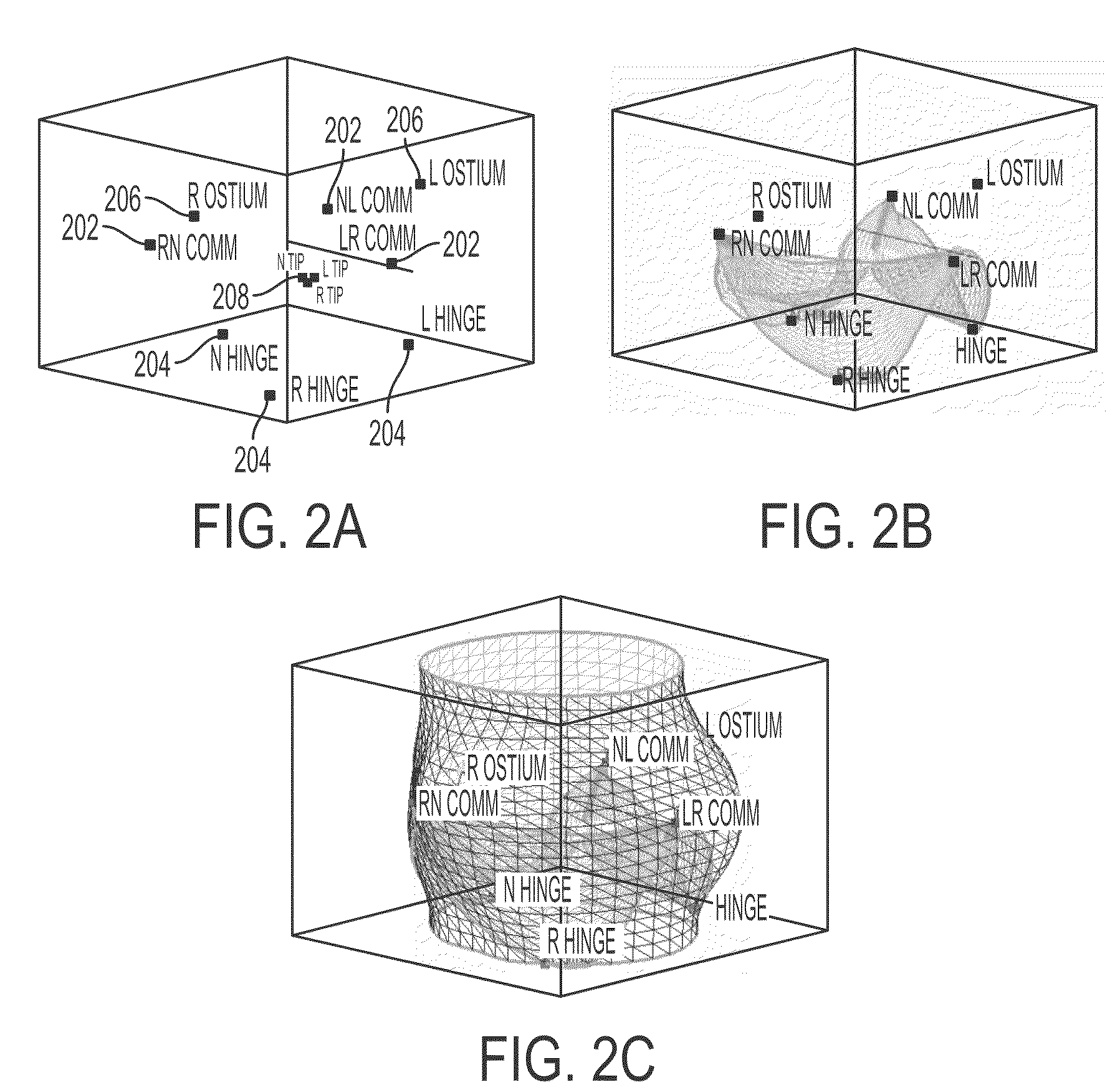Method and system for automatic quantification of aortic valve function from 4D computed tomography data using a physiological model
a computed tomography and physiological model technology, applied in image analysis, image enhancement, instruments, etc., can solve the problems of limited quantitative and visual methods for evaluating the function of the aortic valve, difficult management of patients with vhd, and significant effects
- Summary
- Abstract
- Description
- Claims
- Application Information
AI Technical Summary
Benefits of technology
Problems solved by technology
Method used
Image
Examples
Embodiment Construction
[0018]The present invention relates to modeling and quantitative evaluation of the aortic valve using 4D computed tomography (CT) data or echocardiography data. 4D CT data refers to dynamic CT volume sequences taken over a period of time, in which each frame is a 3D CT volume. Embodiments of the present invention are described herein to give a visual understanding of the heart modeling method. A digital image is often composed of digital representations of one or more objects (or shapes). The digital representation of an object is often described herein in terms of identifying and manipulating the objects. Such manipulations are virtual manipulations accomplished in the memory or other circuitry / hardware of a computer system. Accordingly, is to be understood that embodiments of the present invention may be performed within a computer system using data stored within the computer system. Embodiments of the present invention are described herein as using 4D CT data to model and quantit...
PUM
 Login to View More
Login to View More Abstract
Description
Claims
Application Information
 Login to View More
Login to View More - R&D
- Intellectual Property
- Life Sciences
- Materials
- Tech Scout
- Unparalleled Data Quality
- Higher Quality Content
- 60% Fewer Hallucinations
Browse by: Latest US Patents, China's latest patents, Technical Efficacy Thesaurus, Application Domain, Technology Topic, Popular Technical Reports.
© 2025 PatSnap. All rights reserved.Legal|Privacy policy|Modern Slavery Act Transparency Statement|Sitemap|About US| Contact US: help@patsnap.com



